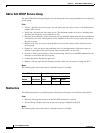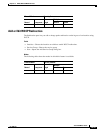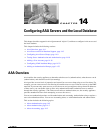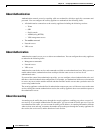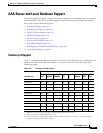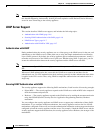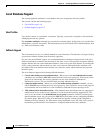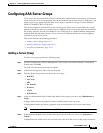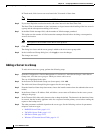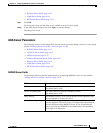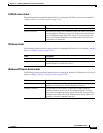
14-6
Cisco ASDM User Guide
OL-16647-01
Chapter 14 Configuring AAA Servers and the Local Database
AAA Server and Local Database Support
Note The security appliance does not support changing user passwords during tunnel negotiation. To avoid
this situation happening inadvertently, disable password expiration on the Kerberos/Active Directory
server for users connecting to the security appliance.
LDAP Server Support
This section describes LDAP server support, and includes the following topics:
• Authentication with LDAP, page 14-6
• Securing LDAP Authentication with SASL, page 14-6
• LDAP Server Types, page 14-7
• Authorization with LDAP for VPN, page 14-7
Authentication with LDAP
During authentication, the security appliance acts as a client proxy to the LDAP server for the user, and
authenticates to the LDAP server in either plain text or using the Simple Authentication and Security
Layer (SASL) protocol. By default, the security appliance passes authentication parameters, usually a
username and password, to the LDAP server in plain text. Whether using SASL or plain text, you can
secure the communications between the security appliance and the LDAP server with SSL.
Note If you do not configure SASL, we strongly recommend that you secure LDAP communications with
SSL.
When user LDAP authentication has succeeded, the LDAP server returns the attributes for the
authenticated user. For VPN authentication, these attributes generally include authorization data which
is applied to the VPN session. Thus, using LDAP accomplishes authentication and authorization in a
single step.
Securing LDAP Authentication with SASL
The security appliance supports the following SASL mechanisms, listed in order of increasing strength:
• Digest-MD5 — The security appliance responds to the LDAP server with an MD5 value computed
from the username and password.
• Kerberos — The security appliance responds to the LDAP server by sending the username and realm
using the GSSAPI (Generic Security Services Application Programming Interface) Kerberos
mechanism.
You can configure the security appliance and LDAP server to support any combination of these SASL
mechanisms. If you configure multiple mechanisms, the security appliance retrieves the list of SASL
mechanisms configured on the server and sets the authentication mechanism to the strongest mechanism
configured on both the security appliance and the server. For example, if both the LDAP server and the
security appliance support both mechanisms, the security appliance selects Kerberos, the stronger of the
mechanisms.



